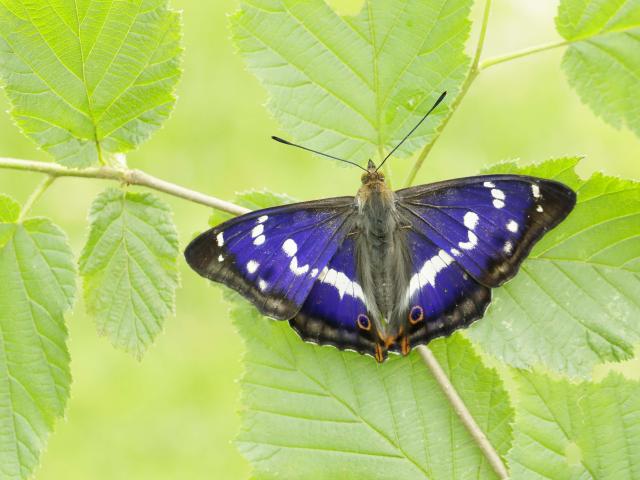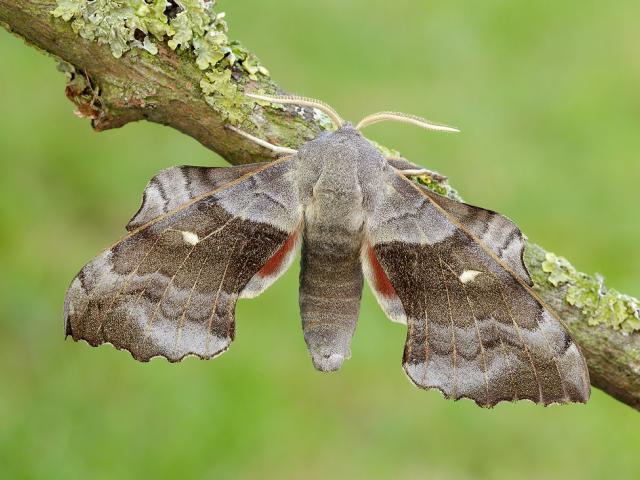

Woodland is likely to have been the dominant ecosystem in Europe after the last Ice Age and therefore is extremely important for Lepidoptera, many of which have foodplants that are trees and shrubs.
Native woodland is a true spectacle to the senses. The sound of birdsong, smell of wildflowers, the sight of old, gnarled trees. Native woodland is truly irreplaceable. Good quality native woodland consists of a range of tree species, old and young trees, plenty of falling and standing deadwood, a diverse understorey and field layer, and open, sunny glades. A rich mosaic of ecosystem functions and interactions occur between different organisms at multiple trophic levels.
Threats to woodland biodiversity
Woodland biodiversity indicators for butterflies and birds show dramatic changes. The woodland bird index from the BTO highlighted a decline of 25% between 1970 and 2017, with specialist woodland species declining by 56%. Similarly, butterflies counted on UKBMS transects in England woodland displayed a decline of 55% between 1976 and 2014.
Our woodland biodiversity is therefore in trouble and there are a number of reasons for this.
- Woodland areas in the UK are small, the largest being only 800km2. Many of the larger woodlands are also commercial, conifer plantations.
- Woodlands are fragmented, isolated and lack connectivity to other woodlands.
- Destruction of woodland, particularly ancient woodland.
- Intensification within woodlands (forestry practices) and in the surrounding landscapes (urbanisations, intensive moorland management, agricultural intensification eg pesticides).
- Replanting on native tree species with non-native species.
- Lack of woodland management in some instances.
- Lack of standing and fallen deadwood, which is important for fungi, Coleoptera and nesting birds.
- Reduced structural diversity and mixtures of tree species, which reduces key functions that provide ecosystem services.
- Reduced natural disturbances through native, wild herbivores.
- Lack of habitat continuity, especially for woodland specialist species.
- Disruption or drainage of hydrological features.
- Increased deer browsing levels, due to a lack on natural predators, which has reduced structural diversity particularly in shrub and field layers, whilst also preventing natural regeneration.
- Non-native species including pests and diseases.
- Nitrogen deposition and other pollution impacts.
- Climate change.

Woodland in the UK
- The UK has only 13% woodland cover, compared with 37% for EU countries.
- Native woodland cover is approximately 1,000,000 ha. That may sounds like a lot but it is just 4% of the land area in the UK.
- The UK has some of the lowest levels of native woodland cover in the world, when considering countries where woodland is naturally present.
- The majority of woodland cover in the UK consists of plantations or is of plantation origin, many managed commercially in order to provide money from timber.
As plantations form two-thirds of our woodland cover trying to increase the biodiversity value of these plantations is therefore crucially important for woodland biodiversity.

